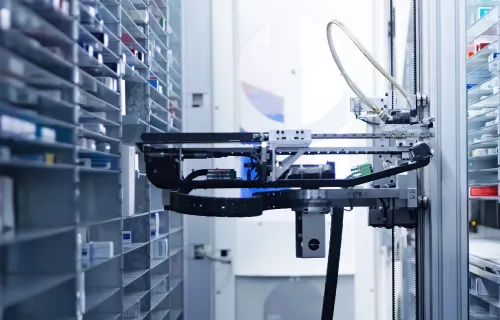I’ve been having a lively debate with a few of my colleagues about the digital value chain: a holistic view, of how technology enhances, connects and integrates the entire organization to deliver superior customer outcomes. We’ve been trying to pinpoint why so many digital transformation efforts have failed to deliver their intended outcomes. We’ve determined that many of these digital initiatives get stuck when they focus heavily on the end user experience and not on a more holistic view of their people, processes and system to bring value.
I can’t speak for all industries, but I can say – when talking about pharma and biotech – listen to Willie Sutton. The infamous 1930s bank robber was once asked why he robbed banks. He answered, “because that’s where the money is.” Similarly, when asked “Why do pharma and biotech focus their digital investments on front-end, client-facing initiatives?” the answer is the same. That is the revenue driver of the business. Many organizations look at the back end as a necessary cost center, but not a profit driver. Pharma[1] can only start to assess the valuation of any pipeline product as a potential revenue source after it has a successful phase two. As a result, research and development (R&D) is seen as a resource to be managed – a cost to be contained – and therefore is often is a source of underinvestment. Taking this view is short-sighted, however, and may lead to stagnation when it comes to digital transformation.
Innovation in the back-end of pharma leads to faster value realization
The record pace of R&D succeeded because all parties involved were able to leverage innovation in the back end. While the vaccine was created under extreme circumstances, the processes and technology used does create a blueprint for how to reimagine what your back-end R&D can become.
Take the innovation of business agility. When researchers adopt more agile approaches to development over traditional waterfall methodologies, they are able to try, fail, learn and adapt much quicker leading to faster breakthroughs, and ultimately faster time to market. The cloud is another kind of innovation we see pharma leaders being able to leverage. By making data available for collaboration with an ecosystem of research partners through the cloud, pharma companies can share information quicker and more easily, leading to faster time to market. Similarly, using intelligent automation for patient identification and complex pattern recognition speeds up the time to market, which of course leads to faster value realization.
Still a lot of room for innovation on the pharma front-end
Even though most of the investment in digital has been on the front end – the commercialization, manufacturing and distribution of an approved drug – it still leaves a lot to be desired. In fact, research shows that consumers viewed digital services in Life Sciences as the least trustworthy and ranked it the bottom quartile of all industries.
Even before a drug is approved, pharma companies have the opportunity to better use automation and data to collaborate with regulators. Marketing has undergone significant changes in the past decade, with pharma being able to interact directly with patients through digital channels. Unfortunately, these same digital channels are rife with misinformation. So while the reach is there, the connection often isn’t. This is where being able to have a holistic view of data throughout the products’ lifecycle – from discovery to manufacturing and distribution – becomes so important.
Connections or touchpoints are the key to success. Very often when we look at the channels for pharma – be it a branded or unbranded website or other digital channels – they do not connect all the resources or action/engagement points seamlessly. When a customer has to make several clicks to find a resource or get from one source to another, it creates frustration especially in the instant-gratification culture we have developed.
Patient drop-off and adherence risk – two other big issues in the front-end – affect care. While patient service hubs exist to support a full patient journey in areas such as oncology and rare diseases have, it is a model that could serve many other types of treatments delivering patient value throughout their journey, from diagnosis to treatment and post-treatment care. Customers and patients are looking for that “beyond the pill” value.
Which brings us to an important and often overlooked need – education. Gone are the days of product detailing. Patients want more understanding of what to expect; payers are looking for value-based outcomes. The right digital strategy can certainly help to fulfill these needs for the respective customer in a cohesive and seamless manner.
Taking a holistic view
Whether you’re talking front end or back end of your value chain, though, there’s a bigger divide that needs to be overcome for pharma companies to really achieve transformation. For digital strategies to work, both business and IT have to work together. Marketing may say they want an omni-channel approach for more consistency and better data – IT has to be part of that conversation in the planning phase. In successful pharma companies, IT and their business partners move in tandem. This holistic view is what allows for effective change management.
That term has become somewhat of a dirty word – not just in pharma, but in most industries, as there’s a perception that people are generally resistant to change. People are often open to change when they are part and parcel of that discussion; when they're driving that solutioning and their thinking is incorporated into the final product. By being part of the change journey, people become ambassadors for the change.
[1] While there are distinct differences between pharmaceutical companies and biotech, for the sake of this post the I use the term “pharma” to describe the broader overlap of drug manufacturing organizations.





